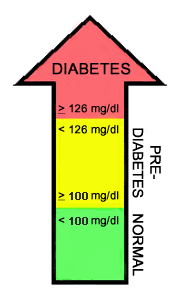Diabetes mellitus type 1 laboratory findings: Difference between revisions
No edit summary |
|||
| Line 15: | Line 15: | ||
|Diabetic Ketoacidosis | |Diabetic Ketoacidosis | ||
|- | |- | ||
| rowspan=" | | rowspan="16" |Blood | ||
|Glucose | |Glucose | ||
| | | | ||
| Line 25: | Line 25: | ||
|HbA<sub>1c</sub> level of 6.5% or higher | |HbA<sub>1c</sub> level of 6.5% or higher | ||
|Not applicable | |Not applicable | ||
|- | |||
|C-Peptide below | |||
|below 5 µU/mL | |||
|Not applicable | |||
|- | |||
|Islet-cell (IA2) | |||
|Measurements of IA2 autoantibodies within 6 months of diagnosis can help differentiate between type 1 and type 2 DM | |||
|Not applicable | |||
|- | |||
|Anti-GAD65 | |||
|Usually present | |||
|Not applicable | |||
|- | |||
|Anti-insulin autoantibodies | |||
|Usually present | |||
|Not applicable | |||
|- | |- | ||
|CBC with differential | |CBC with differential | ||
Revision as of 21:13, 19 December 2016
|
Diabetes mellitus type 1 Microchapters |
|
Differentiating Diabetes mellitus type 1 from other Diseases |
|
Diagnosis |
|
Treatment |
|
Cardiovascular Disease and Risk Management |
|
Case Studies |
|
Diabetes mellitus Main page |
|
Patient Information |
|---|
Editor-In-Chief: C. Michael Gibson, M.S., M.D. [1]
Overview
Laboratory Findings
| Laboratory findings in type 1 diabetes based on presentation | |||
|---|---|---|---|
| Classic new onset | Diabetic Ketoacidosis | ||
| Blood | Glucose |
|
Random glucose sugar is more then 250 mg/dl |
| HbA1c | HbA1c level of 6.5% or higher | Not applicable | |
| C-Peptide below | below 5 µU/mL | Not applicable | |
| Islet-cell (IA2) | Measurements of IA2 autoantibodies within 6 months of diagnosis can help differentiate between type 1 and type 2 DM | Not applicable | |
| Anti-GAD65 | Usually present | Not applicable | |
| Anti-insulin autoantibodies | Usually present | Not applicable | |
| CBC with differential | Normal | Mildly elevated with normal differential | |
| Basic metabolic panel | Normal | Serum bicarbonate < 18 mEq/L
Serum Sodium: Often normal or elevated Serum Phosphate: Often normal or elevated Serum Potassium: Often normal or elevated | |
| Serum Creatinine | Normal | Often elevated | |
| Serum calicum | Normal | Decreased | |
| Serum amylase | Normal | Mildly elevated | |
| Serum Lipase | Normal | Normal | |
| Serum osmorality | Normal | Normal | |
| Serum Ketones | Normal | High | |
| Anion gap | normal | High | |
| Arterial Blood gas | Normal | Metabolic acidosis, compensated by
respiratory alkalosis | |
| Urine | Glucose | May or may not be present(Blood glucose should be more then 200 mg/dl to appear in urine) | Often present |
| Ketones | absent | Present | |
There are two different tests your doctor can use to determine whether you have pre-diabetes or diabetes: the fasting plasma glucose test (FPG) or the oral glucose tolerance test (OGTT). The blood glucose levels measured after these tests determine whether you have a normal metabolism, or whether you have pre-diabetes or diabetes. If your blood glucose level is abnormal following the FPG, you have impaired fasting glucose (IFG); if your blood glucose level is abnormal following the OGTT, you have impaired glucose tolerance (IGT).

FPG OGTT
The most useful laboratory test to distinguish Type 1 from Type 2 diabetes is the C-peptide assay, which is a measure of endogenous insulin production since external insulin (to date) has included no C-peptide. However, C-peptide is not absent in Type 1 diabetes until insulin production has fully ceased, which may take months. The presence of anti-islet antibodies (to Glutamic Acid Decarboxylase, Insulinoma Associated Peptide-2 or insulin), or lack of insulin resistance, determined by a glucose tolerance test, would also be suggestive of Type 1. As opposed to that, many Type 2 diabetics still produce some insulin internally, and all have some degree of insulin resistance.
Testing for GAD 65 antibodies has been proposed as an improved test for differentiating between Type 1 and Type 2 diabetes.